When it comes to selecting the perfect floor covering for your home, timber floorboards are a timeless and popular choice. While alternatives like tiles and carpets have their merits, timber flooring offers a unique warmth and character that many homeowners find irresistible. Luxury vinyl tiles (LVT) can also provide warmth and durability, but timber flooring remains a classic choice. In this comprehensive guide, we will explore the world of timber flooring, helping you make informed decisions for your home. From timber species to installation methods and maintenance, we’ve got you covered.
Timber Flooring: A Timeless Choice
Timber floorboards have a timeless appeal, offering warmth and character to any space. However, traditional hardwood floorboards, made entirely from timber, are now less common due to their installation challenges and limitations. They are often not compatible with underfloor heating systems and require regular, high-maintenance care.
For modern homeowners, engineered wood flooring has become the preferred choice. Engineered wood consists of a thin veneer of solid wood bonded to a backing made of plywood or softwood. This innovative construction offers a stable flooring option that can withstand the demands of underfloor heating. It also provides a wide range of finishes and designs, making it a versatile choice for any home.
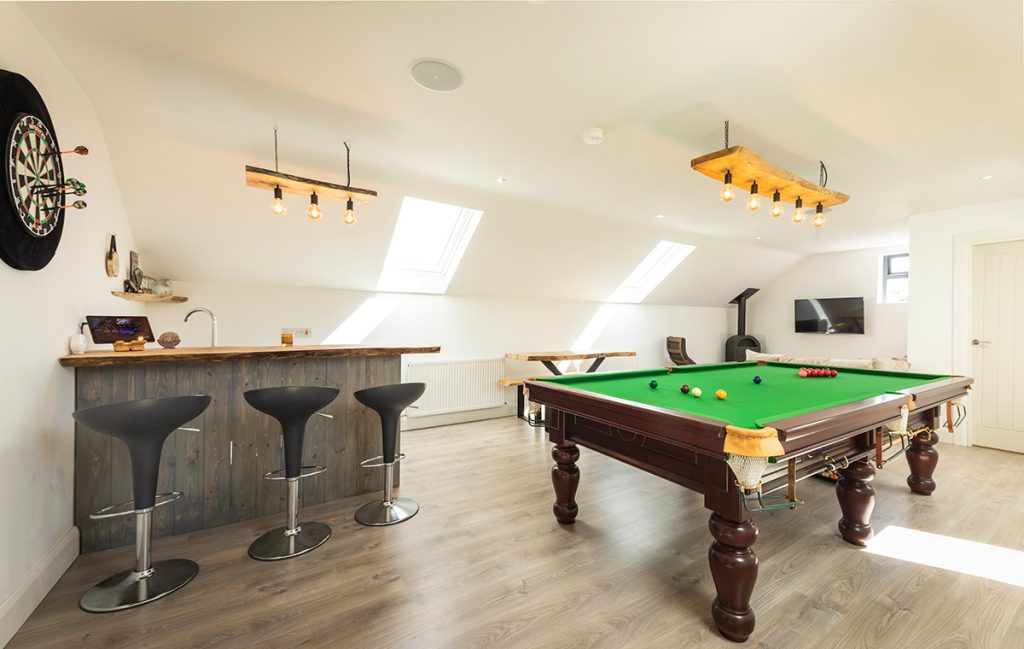
Popular Timber Flooring Species
Choosing the right timber species is a crucial decision when considering timber flooring. Each species has unique characteristics that can influence the overall look and feel of your space. Here are some popular timber flooring species:
Oak: A Timeless Favourite
Oak remains the dominant player in the timber flooring market. It’s prized for its durability and stability, as it doesn’t easily warp or shrink once seasoned. European oak, in particular, is in high demand due to its ability to take stains and smoking processes better than its North American counterpart. European oak is commonly sourced from the Baltic areas and Eastern Europe.
Walnut: A Resurgence in Elegance
Walnut flooring is experiencing a resurgence in popularity. Its distinctive burl and swirl patterns are hard to replicate with oak, even with various stains and tints. Walnut’s unique character adds an elegant touch to any interior.
Wenge: A Distinctive Choice
African Wenge is another distinctive timber species. Its grain structure is one-of-a-kind, making it stand out in any setting. While Wenge tints are available for oak, nothing quite matches the uniqueness of this species.

Douglas Fir: A Scandinavian Favorite
Douglas fir, often finished with a whitewashed oil, has gained popularity thanks to the Scandinavian interior design trend. It offers a fresh and light look that complements modern interiors.
Lesser-Known Species: Ash, Birch, and Maple
While oak, walnut, and Douglas fir dominate the market, lesser-known species like ash, birch, and maple can offer unique beauty and character. Don’t overlook these options when choosing your timber flooring.
Remember that the choice of timber species can significantly impact the final look of your floor, so consider your preferences and interior design carefully.
Timber Flooring Designs
Selecting the right timber species is just the beginning; you also need to consider the flooring design. Timber flooring can be installed in various patterns, each creating a distinct aesthetic. Here are some popular timber flooring designs:
Herringbone: A Classic Pattern
Herringbone parquet, with planks laid at a 90-degree angle to each other, is a classic choice for timber flooring. It adds timeless elegance to any space and is well-suited for both traditional and contemporary interiors. Boards of 600mm length and 70mm or 100mm width are increasingly popular for herringbone patterns.
Chevron: A Stylish Alternative
Chevron, also known as Hungarian Point or point d’Hongrie, is an alternative to traditional plank flooring. It features planks laid at either a 45-degree or 60-degree angle, creating an appealing, regimented pattern.
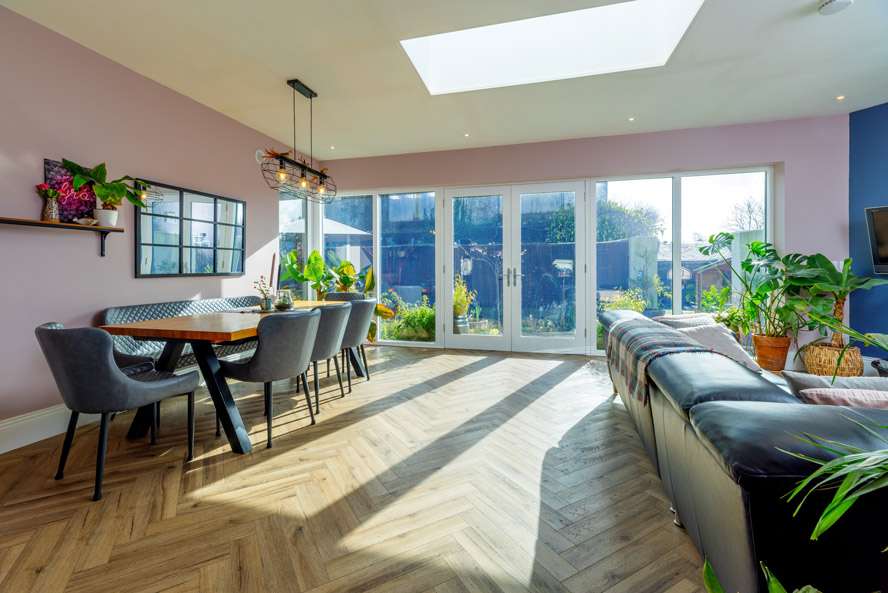
Parquet Panels: A Bold Statement
For those looking to make a bold statement, consider using timber flooring panels with intricate designs. These panels can be laid as large tiles, such as the Versailles pattern, reminiscent of historic wood floors. Other options, like Mansion Weave, consist of repeating pieces that form intricate jigsaw-like designs.
Consider Installation Layout
When choosing a panelled floor, it’s essential to work with an architect or designer to plan the layout carefully. Panels are typically produced in set dimensions, so thoughtful planning is required to avoid ending up with an unsightly cut panel against a wall.
Installing Timber Flooring
Timber flooring installation has come a long way, with various methods and technologies available today. Here’s what you need to know about installing timber flooring:
Adhesive Bonding
Commonly, timber flooring is securely bonded to the substrate screed using adhesive. This method ensures a stable and durable installation. It’s suitable for both engineered wood and solid wood floors.
Floating Installation
Another popular method is floating the wood floor using adhesive only on the tongue and grooves of the planks. The wood is then laid on a foam underlay, which speeds up the installation process. This method is often chosen for its efficiency.
Click System
Modern timber flooring often comes with a click system, allowing individual boards to be joined seamlessly. This system is suitable for various designs, including parquet and chevron patterns.
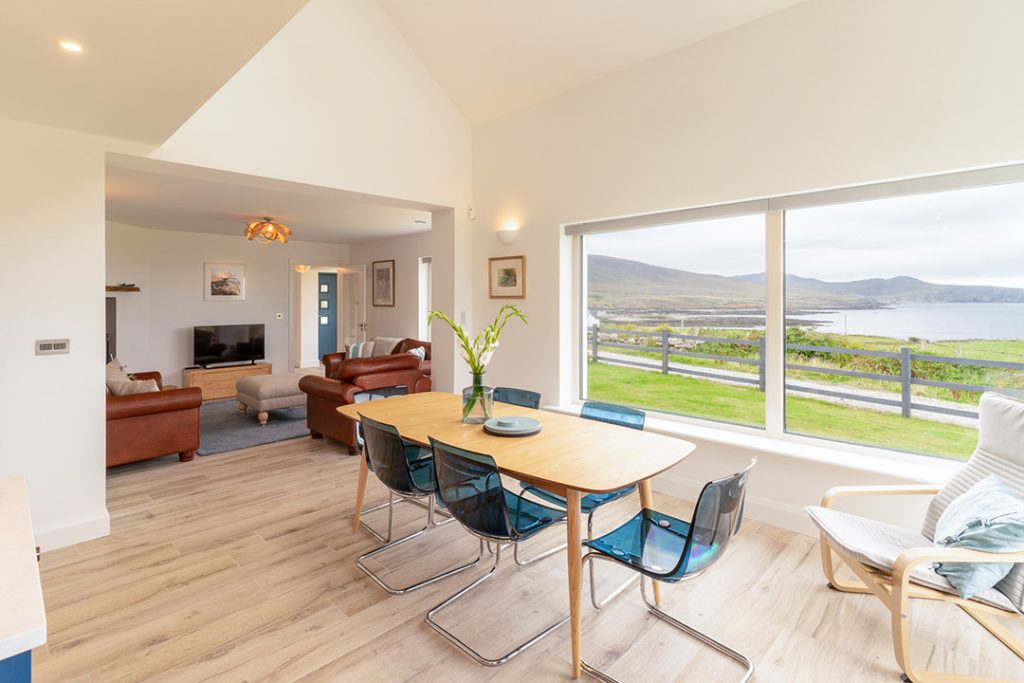
Consider Underfloor Heating
If you plan to install timber flooring with underfloor heating, close collaboration with your heating and plumbing contractor is essential. The surface temperature of the wood floor should not exceed 27 degrees Celsius to ensure the system’s efficiency. Measuring the temperature at the wood surface is crucial to prevent overheating.
Moisture Content Matters
The moisture content of both the screed and the wood being laid is critical. For cement-based screeds, the moisture should be below 4 percent before installing a wood floor. Depending on the type of heating used, the hardwood element of the wood floor should have a specific moisture content. Ensure these conditions are met to avoid issues down the road.
Use Measuring Units
Consider using small measuring units installed on the rear surface of the wood floor to monitor moisture content and temperature. These devices can settle any disputes between wood manufacturers and heating contractors, ensuring a trouble-free installation.
Caring for Your Timber Flooring
Proper maintenance is key to preserving the beauty and longevity of your timber flooring. Here are some essential care tips:
Regular Cleaning
Sweep and vacuum your wood floor regularly to remove dirt and dust. Use mats at entrance points to prevent debris from entering your home. Ensure that furniture has protective pads to prevent scratches and abrasions.
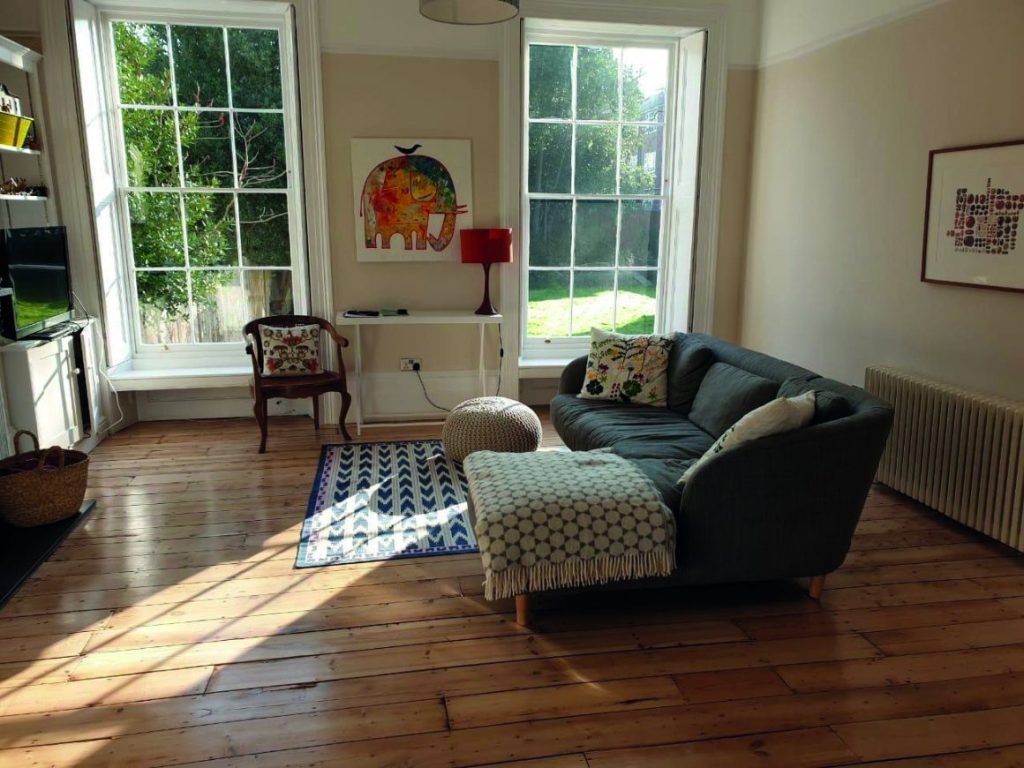
Use Wood Floor Cleaners
Use proprietary wood floor cleaners to clean your floor. Avoid harsh chemicals that can damage the finish. If you notice minor abrasions on hand-applied oiled floors, you can gently rub the affected areas with the same oil to restore their appearance.
Addressing Lacquered Floors
Lacquered floors are more challenging to spot repair. For major dents or localized damage, consider having skilled wood floor layers lift and replace the affected boards. Keeping a few spare boards from the original installation can be helpful for such repairs.
Sanding, Sealing, and Restoration
If your timber floor starts to show signs of wear and tear, sanding, sealing, and restoration can breathe new life into it. Modern sanding technology with dust suppression ensures a cleaner process. You can choose from various finishes, including lacquer or oil, and opt for colours and textures that suit your style. It’s worth considering textured finishes like bandsawn, distressed, or brushed wood floors, though keep in mind that these may be challenging to restore after sanding.
Timber Flooring Sustainability
Sustainability is a critical factor to consider when choosing timber flooring. Responsible forestry practices help protect natural diversity and prevent soil erosion. Look for the Forest Stewardship Council (FSC) logo, which is a leading quality mark for sustainable forestry. Many wood floors are produced to FSC accreditation standards these days, but it’s still essential to ask questions and keep suppliers accountable.
In recent years, the source of hardwood for wood flooring has shifted to Europe for oak, reducing the demand for alternative species in the Irish market and alleviating pressure on dwindling wood species such as teak.
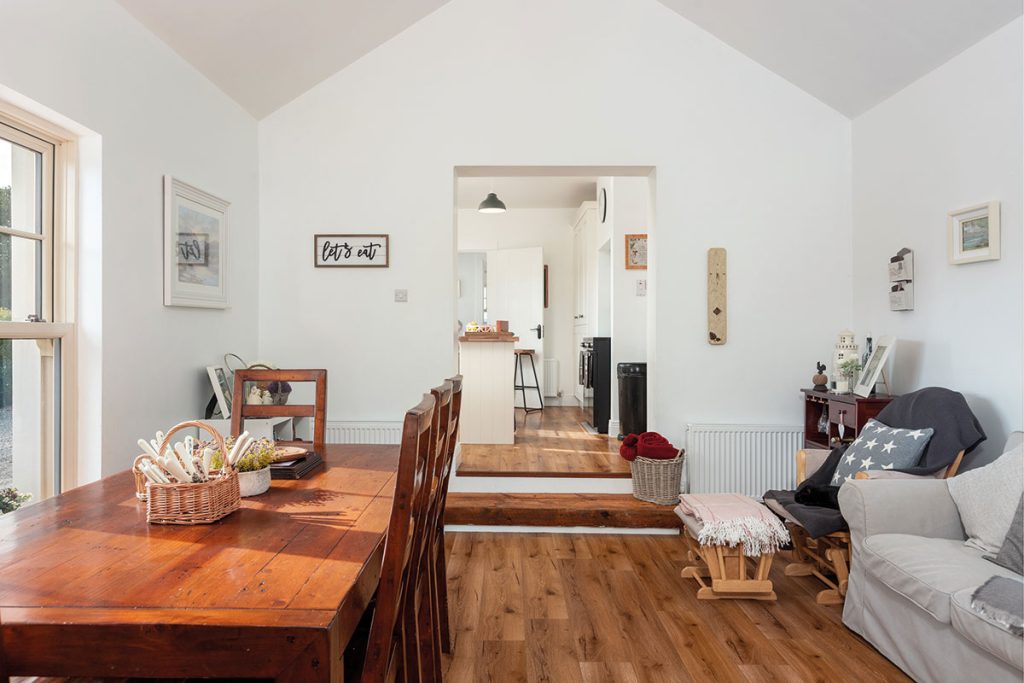
Timber Flooring Pricing
Understanding the cost of timber flooring involves considering multiple factors. The overall cost consists of three main elements:
- Cost of the Wood Flooring: This can vary significantly, from budget-friendly engineered options to high-end finishes like Versailles Panels. Prices can range from €20/£25 to €300/£280 per square meter, including VAT.
- Cost of Installation: The installation cost depends on factors like the complexity of the design and the chosen installation method. Plank flooring typically costs between €20/£15 to €40/£35 per square meter, excluding adhesive or underlay. Parquet or chevron patterns may range from €50/£45 to €70/£65 per square meter.
- Cost of Ancillary Items: Don’t forget to factor in additional costs for items like underlay (€5/£4 to €20/£15 per square meter) and adhesive (€12/£10 to €15/£12 per square meter). Transition elements to other floor coverings, like tile or carpet, can add another €2/£1 to €5/£4 per square meter.
The complexity of the finish, including knots and color variations, can also impact the cost of the wood flooring itself. Keep in mind that while budget-friendly options exist, investing in quality materials and professional installation often pays off in the long run.
Choose the Right Installation Team
Selecting the right team to install your timber flooring is crucial for a successful project. While some carpenters and joiners may offer installation services, it’s advisable to work with a specialized wood flooring company. Here are a few reasons why:
- Expertise: Wood flooring specialists have the expertise and experience to handle all aspects of the installation, from design to supply and installation. They understand the unique requirements of timber flooring.
- Communication: When one company manages the entire process, communication is more seamless. This ensures that all aspects of the project, including scheduling and site conditions, are well-coordinated.
- Quality Assurance: Wood flooring specialists are dedicated to delivering high-quality results. They are more likely to guarantee the durability and longevity of your timber floor.
By choosing a specialized wood flooring company, you can enjoy peace of mind knowing that your investment will yield beautiful and long-lasting results.
In conclusion, timber flooring is a timeless and versatile choice for homeowners. Whether you opt for classic oak, elegant walnut, or a unique timber species, the right timber flooring can enhance the beauty and warmth of your home. Consider your preferences, budget, and sustainability goals when making your selection, and work closely with professionals to ensure a successful installation. With proper care and maintenance, your timber flooring can last for many years, providing a stunning and inviting foundation for your living space.




